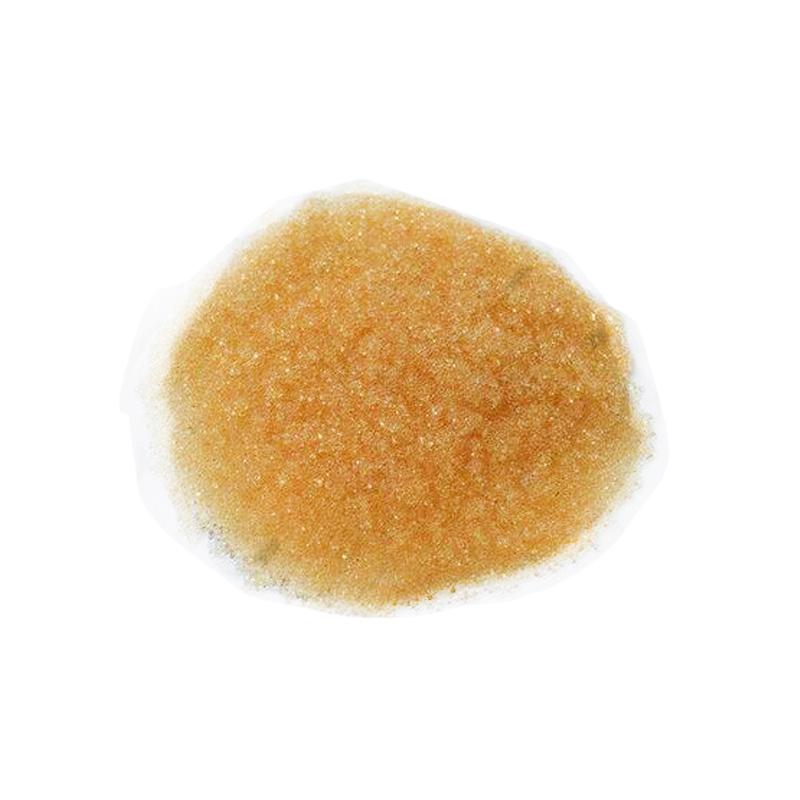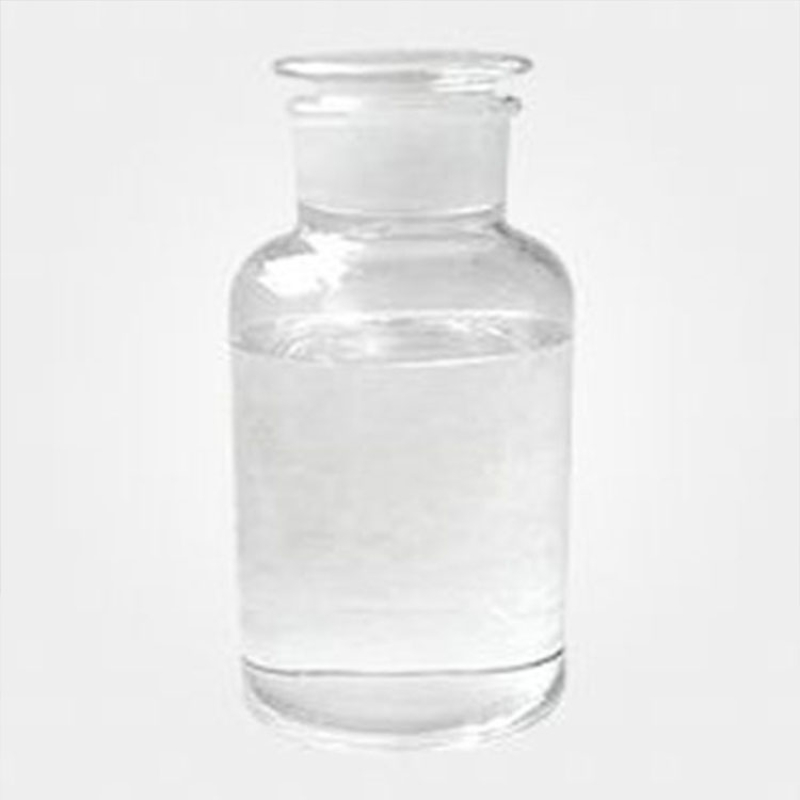Petroleum resins CAS#64742-16-1Petroleum resins is a complex combination of organic compounds, predominantly hydrocarbons, obtained as a fraction of the extract from solvent extraction of residuum.
Contact Now
Petroleum Resins CAS#68131-77-1Petroleum resin is produced by pre-treatment, polymerization, distillation and other processes of C5 and C9 fractions produced as by-products of petroleum cracking.
Contact Now
Products Description of 3,5-Dimethylacetophenone CAS#5379-16-83,5-Dimethylacetophenone is a chemical substance with the chemical formula C10H12O and a molecular weight of 148.21.3,5-DIMETHYLACETOPHENONE Chemical PropertiesMelting point 20°CBoiling point 98-100°C 8mmdensity 0,988 g/cm3refractive index 1.5290Fp 98-100°C/8mmstorage temp. Sealed in dry,Room Temperatureform powder to lump to clear liquidcolor White or Colorless to Almost white or Almost colorlessλmax251nm(MeOH)(lit.)BRN 2240987Safety InformationSafety Statements 24/25HS Code&nb
Contact Now
Products Description of Divinylbenzene CAS#1321-74-0Divinylbenzene is a very useful crosslinking agent, widely used in ion exchange resins, ion exchange membranes, ABS resins, polystyrene resins, unsaturated polyester resins, synthetic rubber and other fields. However, divinylbenzene is highly reactive. During the distillation process, it is very easy to undergo free radical polymerization due to the initiation of metal ions and heat. The higher the temperature, the faster the polymerization rate.
Contact Now
Products Description of 1H,1H,2H,2H-Perfluorodecyltriethoxysilane CAS#101947-16-4Organosilicon compounds and organosilicon materials made from them are of many varieties and excellent in performance. They have been widely used in industrial and agricultural production, emerging technologies, national defense and military industries, etc. The hydrosilylation reaction is one of the most important methods for generating Si-C bonds in organosilicon chemistry.
Contact Now
Products Description of Triethylene glycol dimethacrylate CAS#109-16-0Unsaturated polyester resin (UPR) is one of the three most widely used matrix resin materials in resin-based composite materials.
Contact Now
Products Description of Sulfonic acids, petroleum, sodium salts CAS#68608-26-4White powderSulfonic acids, petroleum, sodium salts Chemical PropertiesBoiling point 1042.61℃[at 101 325 Pa]vapor pressure 0Pa at 25℃Water Solubility 0.065ng/L at 25℃LogP22.12 at 25℃EPA Substance Registry SystemPetroleum sulfonic acids, sodium salts (68608-26-4)Factory and Equipment ShowFast delivery timeInventory 2-3 working days New production 7-10 working days
Contact Now
Products Description of (1S)-(+)-Camphor-10-sulphonic acid CAS#3144-16-9Optically active left- and right-handed camphorsulfonic acid is an important resolving agent for chiral isomer drugs.
Contact Now
Mineral Oil CAS# 8042-47-5Mineral oil is a highly refined petroleum mineral oil consisting of a complex combination of hydrocarbons obtained from the intensive treatment of a petroleum fraction with sulfuric acid and oleum, or by hydrogenation, or by a combination of hydrogenation and acid treatment. Additional washing and treating steps may be included in the processing operation.
Contact Now
Products Description of Sodium lauroylsarcosinateCAS#137-16-6Sodium lauroyl sarcosinate, also known as sodium lauroyl-N-methylaminoacetate and sodium lauroyl-N-methylglycinate. The main functions of sodium lauroyl sarcosinate in cosmetics and skin care products are antistatic, foaming agent, detergent, and surfactant. The risk factor is 3, which is relatively safe and can be used with confidence. It generally has no effect on pregnant women. Sodium lauroyl sarcosinate is not acne-causing.
Contact Now
Products Description of 1,3,5-Benzenetricarboxylic acid chlorideCAS#4422-95-1White powder1,3,5-Benzenetricarboxylic acid chloride Chemical PropertiesMelting point 32-38 °C (lit.)Boiling point 180 °C/16 mmHg (lit.)density 1.487 g/mL at 25 °C (lit.)refractive index 1.5945-1.5965Fp >230 °Fstorage temp. Store below +30°C.solubility decomposesform Liquidcolor Clear colorless to slightly yellowWater Solubility decomposesSensitive Moisture SensitiveBRN 2940936CAS DataBase Reference4422-95-1(CAS DataBase Reference)NIST Chemistry
Contact Now
Products Description of Antioxidant 1010 CAS#6683-19-8Antioxidant 1010 is a macromolecular multifunctional hindered phenol antioxidant, soluble in benzene, acetone, chloroform, insoluble in water. It is non-polluting, non-coloring, low in volatility, and has good extraction resistance.It is widely used in polyethylene, polypropylene, polyoxymethylene, ABS resin, PS resin, PVC, engineering plastics, rubber and petroleum products, and has excellent antioxidant properties for polypropylene and polyethylene. It can effectively extend the service life of the product.1.
Contact Now
Products Description of Bis(2-ethylhexyl) maleate CAS#142-16-5Diethylhexyl maleate, also known as diisooctyl maleate, is a chemical with the molecular formula C20H36O4.Bis(2-ethylhexyl) maleate Chemical PropertiesMelting point -50°CBoiling point 208-209°C 10mmdensity 0.944 g/mL at 25 °C(lit.)vapor pressure 0Pa at 20℃refractive index n20/D 1.455(lit.)Fp >230 °Fstorage temp. Sealed in dry,Room Temperaturesolubility Chloroform (Sparingly), Ethyl Acetate(Slightly),Methanol (Slightly)form Liquidcolor ColourlessWater
Contact Now
Cyclohexanol, 4,4-(1-methylethylidene)bis-, polymer with (chloromethyl)oxirane CAS#30583-72-3Hydrogenated bisphenol A epoxy resin is mainly used in insulating materials.Cyclohexanol, 4,4-(1-methylethylidene)bis-, polymer with (chloromethyl)oxirane Chemical Propertiesdensity 1.135[at 20℃]vapor pressure 0.002Pa at 20℃Water Solubility 58.6mg/L at 30℃InChIInChI=1S/C15H28O2.C3H5ClO/c1-15(2,11-3-7-13(16)8-4-11)12-5-9-14(17)10-6-12;4-1-3-2-5-3/h11-14,16-17H,3-10H2,1-2H3;3H,1-2H2InChIKeyCSSRVVKVKAJYLJ-UHFFFAOYSA-NSMILESC(C1CCC(O)CC1)(C1CCC(O)CC1)(C)C.C(C1OC1)ClLogP3.84 at 20℃EPA Substan
Contact Now
Products Description of AMBERLITE(R) XAD-4 CAS#37380-42-0Ion exchange resin is a kind of functional polymer that can exchange with ions of the same sign in aqueous solution. It is essentially a cross-linked polymer acid or polymer base. Phenolic cation exchange resin was first introduced in 1935, and industrial production began in Germany in 1939 and the United States in 1941. After World War II, polystyrene and polyacrylic acid ion exchange resins were put into production one after another. After the 1960s, macroporous ion exchange resins were developed.
Contact Now
Products Description of O-Phenylphenoxyethyl Acrylate CAS#72009-86-0White powderO-Phenylphenoxyethyl Acrylate Chemical Propertiesvapor pressure 0Pa at 20℃Water Solubility 30mg/L at 20℃InChIInChI=1S/C17H16O3/c1-2-17(18)20-13-12-19-16-11-7-6-10-15(16)14-8-4-3-5-9-14/h2-11H,1,12-13H2InChIKeyVAZQKPWSBFZARZ-UHFFFAOYSA-NSMILESC(OCCOC1=CC=CC=C1C1=CC=CC=C1)(=O)C=CLogP3.68EPA Substance Registry SystemPoly(oxy-1,2-ethanediyl), .alpha.-(1-oxo-2-propenyl)-.omega.-([1,1'-biphenyl]-2-yloxy)- (72009-86-0)Factory and Equipment ShowFast delivery timeInventory 2-3 working days New production
Contact Now
Products Description of Sodium Copper Chlorophyllin CAS#11006-34-1Using natural green plant tissues, such as silkworm excrement, clover, alfalfa, bamboo and other plant leaves as raw materials, extracting with organic solvents such as acetone, methanol, ethanol, petroleum ether, etc., replacing the central magnesium ions of chlorophyll with copper ions, and saponifying it with alkali, removing the methyl and phytol groups, and forming the carboxyl group to become disodium salt. Therefore, sodium copper chlorophyll is a semi-synthetic pigment.
Contact Now
Products Description of Hexaammonium molybdate CAS#12027-67-7Ammonium heptamolybdate is an important intermediate product in the molybdenum metallurgical process. It is the main raw material for the production of molybdenum powder, molybdenum wire and molybdenum-based products. It is also used in industries and fields such as chemical and petroleum catalysts, flame retardants, dyes, pigments and trace element fertilizers.
Contact Now
Products Description of D-(-)-PANTOLACTONE CAS#599-04-2Hygroscopic crystals (benzene/petroleum ether, or obtained by sublimation). Melting point 80 (92°C), boiling point 130°C/2.4kPa, easily soluble in water, soluble in ethanol, ether, chloroform, carbon disulfide, benzene.
Contact Now
Products Description of (1H-indol-3-yl)(2,2,3,3-tetramethylcyclopropyl)methanone CAS#895152-66-6White powder(1H-indol-3-yl)(2,2,3,3-tetramethylcyclopropyl)methanone Chemical PropertiesBoiling point 375.0±15.0 °C(Predicted)density 1.099±0.06 g/cm3(Predicted)storage temp. 2-8°Csolubility DMF: 50 mg/ml; DMF:PBS (pH 7.2); (1:7): 0.13 mg/ml; DMSO: 33 mg/ml; Ethanol: 17 mg/mlform A crystalline solidpka15.50±0.30(Predicted)InChIInChI=1S/C16H19NO/c1-15(2)14(16(15,3)4)13(18)11-9-17-12-8-6-5-7-10(11)12/h5-9,14,17H,1-4H3InChIKeyWYZQBEQQQKCTHM-UHFFFAOYSA-NSMILESC(C1C2=C(NC=1)
Contact Now
MIBK CAS#108-10-1Chemical Properties:Dichloroethane is a colorless and transparent oily liquid with a chloroform-like odor and a sweet taste. It is very easy soluble in water, miscible with ethanol, chloroform and ether,it also can dissolve oil and grease, grease, paraffin. It is mainly used as a solvent.Application:Dichloroethane can be used as a standard reagent for chromatography; it is also used as a solvent for resins, rubber, cellulose acetate, cellulose esters, paints and polymers such as polystyrene; it is also used as a raw material for organic synthesis.
Contact Now
Tolytriazole Sodium Salt CAS#64665-57-2Toluene triazole sodium salt (CAS: 64665-57-2) can be used as a petroleum additive.It has the following characteristics that make it suitable for petroleum-related fields:Anti-rust and corrosion inhibition: It has good anti-rust and corrosion inhibition properties for metals, and can protect metal parts (such as silver, copper, lead, nickel, zinc, etc.) in petroleum processing equipment, pipelines and storage containers from corrosion, extending the service life of equipment.Lubricant additive: It can improve the performance of lubricants, play an anti-ox
Contact Now
Products Description of 1-Chloroisoquinoline CAS#19493-44-81-Chloroisoquinoline can be used as a pharmaceutical synthesis intermediate, such as the preparation of the compound 1-phenylisoquinoline.
Contact Now
Products Description of 1-Dodecanethiol CAS#112-55-0Colorless or light yellow liquid. Melting point -7℃, boiling point 165-169℃ (5.19kPa), 142-145℃ (2kPa), relative density 0.8450 (20/20℃), refractive index 1.4589, flash point 87℃.
Contact Now



































